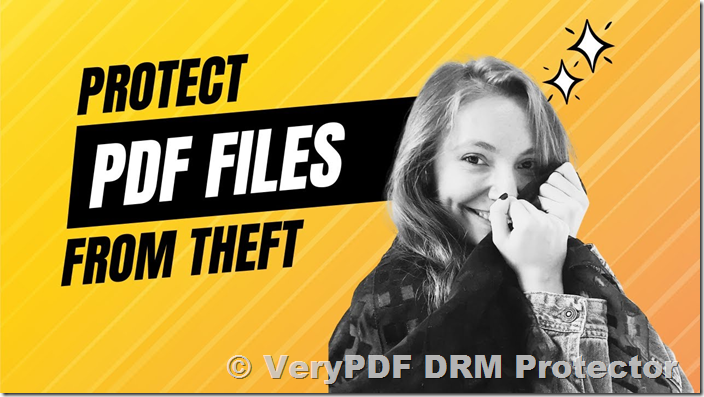When you create a PDF document containing sensitive business or personal information, ensuring its security is paramount. You may need to share this document with specific individuals or groups, but you want to prevent unauthorized access, copying, or redistribution. Here are several ways you can protect your PDF files and control how they are shared.
https://drm.verypdf.com/online/
1. Password Protection
A straightforward way to secure your PDF is by setting a password. With this feature, only those with the password can access the file. Even if the document is accidentally shared with someone else, it will remain unreadable unless the recipient knows the password. Most PDF creation tools, including Adobe Acrobat and many online platforms, offer this functionality. Additionally, you can set permissions within the PDF that restrict actions like printing, editing, or copying, further safeguarding your content.
2. File Encryption
Encryption is one of the most effective ways to protect a PDF, especially when sending it over unsecured channels like email. By encrypting the file, you make it inaccessible to anyone who doesn’t have the proper decryption key. However, keep in mind that once an authorized recipient decrypts the file, they could still share or modify it unless additional restrictions are in place.
3. Watermarking
To discourage unauthorized distribution, you can add watermarks to your PDF. Watermarks can be visible or invisible, but they will always carry identifying information, such as the recipient’s name or email address. This can deter individuals from sharing the document, as it can be traced back to them. If the document ends up in the wrong hands, the watermark helps identify the original recipient.
4. Digital Rights Management (DRM)
For advanced protection, you can use Digital Rights Management (DRM) software. DRM solutions give you the power to restrict how a PDF can be accessed, viewed, or shared. You can limit viewing to specific devices, track how often the file is accessed, and even revoke access after a certain period. This added layer of security is especially useful for highly sensitive content.
5. Set Expiry Dates
Another way to control the availability of a PDF is by setting an expiration date. This means the document will automatically become inaccessible after a set period, limiting the window for unauthorized access. You can also set documents to expire after a certain number of views or prints, further limiting potential sharing.
6. Disable Printing
To ensure that physical copies of your document are not made, you can disable the print option within the PDF. Some tools even allow you to set a limit on the number of prints, or specify whether prints should be in grayscale or black and white. Tracking features can also record when and how often the document is printed, providing an additional level of oversight.
7. Location-Specific Security (Restrict PDF access to specific IP addresses)
With the growing trend of remote work, it’s essential to implement security controls that restrict access to specific locations. By setting up geo-fencing or restricting access to specific IP addresses, you can ensure that your PDF is only accessible from trusted locations. This is particularly useful when sharing business-critical documents that must remain protected, even from remote employees.
8. Use Secure File Sharing Platforms
Rather than sending PDFs directly via email, consider using secure cloud-based platforms like Google Drive, Dropbox, or Adobe Document Cloud. These services allow you to manage permissions and control who can access your document. They often include features like view-only options and expiration dates, which help reduce the risk of unauthorized sharing.
9. Consider Alternative Formats
If your PDF contains information that is frequently shared or copied, you might consider using alternative formats that are more difficult to duplicate, such as encrypted or read-only file types. These can make it harder for others to access or distribute the content without your permission.
Implementing PDF Security: A Step-by-Step Guide
- Choose the Right Tool: Select a PDF editor or online service that offers the security features you need, such as password protection, encryption, or watermarking.
- Set Passwords and Permissions: Use the tool’s options to apply strong passwords and set permission levels to control how the document can be accessed and edited.
- Test the Document: After applying the security measures, ensure that the PDF behaves as expected, and that restrictions are functioning properly.
- Monitor User Experience: Be mindful of how the security settings may affect legitimate users. Striking the right balance between protection and usability is key to avoiding frustration.
Key Considerations
- User Experience: While securing your document is crucial, consider how too many restrictions may impact the user’s ability to view or use the file as intended.
- Balancing Security and Accessibility: Aim to implement robust protections while ensuring that authorized users can still easily access and interact with the document.
By using these techniques, you can significantly reduce the risk of unauthorized file sharing, keeping your sensitive information secure while still allowing access to those who need it.

